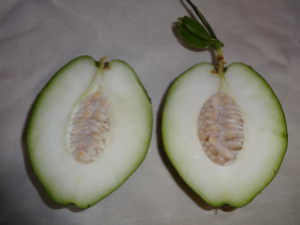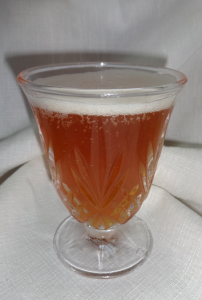 About a week ago, I opened up my stingless-bee, bee-hives to check up on the little darlings and discovered that in one of the hives the bees had started to build brood comb in the honey pot storage area. When I saw it, it was about half the size seen in the photo below. It doubled in size in a week!
About a week ago, I opened up my stingless-bee, bee-hives to check up on the little darlings and discovered that in one of the hives the bees had started to build brood comb in the honey pot storage area. When I saw it, it was about half the size seen in the photo below. It doubled in size in a week!

Out of curiosity, I got in closer to have a goosie:

It would appear that the bees have built an auxiliary brood area with new queen and everything in the middle of the honey chamber, co-existent with the original brood in the brood chamber with its own queen; so, two hives in one. I hypothesise that this is due to the depth of the honey chamber (which is currently set at 2 3/4 inches). The honey pots are about 1 inch tall so it is obvious that there is plenty of volume for a “nest” of brood comb even over a layer of honey pots.
I decided to test this hypothesis by reducing the depth of the honey chamber to 1 1/4 inches. Here is the new hive, which I have called the Gnome Mark II Modified UTOB Hive:

Compared to the original UTOB Hive:

I admit, not a Mind-Boggling Difference but putting it together in Dry Season Super Heat Time made me feel like it was something amazing and deserving of its own name!
Anyway, I took the “extra” brood out and put it in the brood chamber of the new hive:
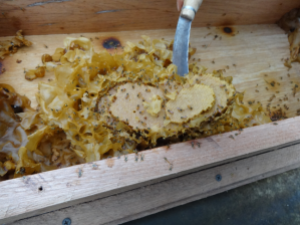
…Into the new hive:
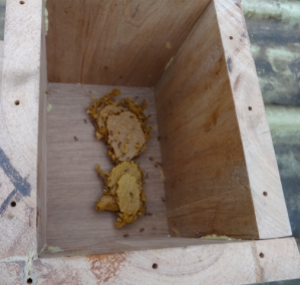
Here’s another shot after more brood was moved over:
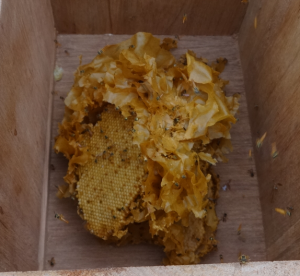
And that was that, all the hives were sealed up and put into their places. Now it is time to wait another month or so before checking on them again…
I love stingless bees!











